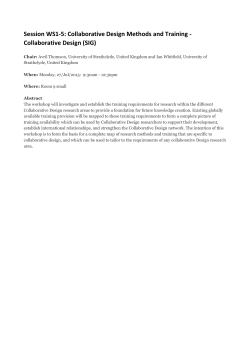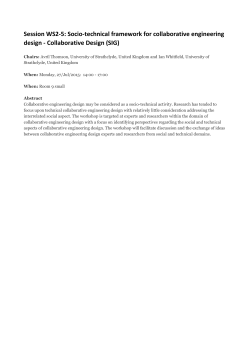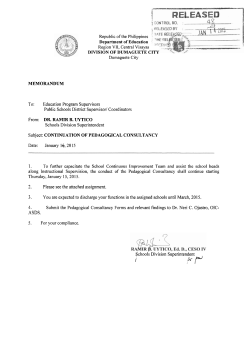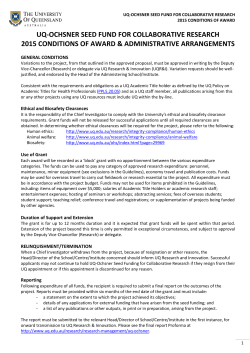
Diapositiva 1 - ARC Enginyeria i Arquitectura La Salle
A global multidisciplinary network on housing research and learning WP4 MEETING Barcelona 10-10-2014 JAKIMOWICZ ADAM, Bialystok University of Technology, Poland School of Architecture La Salle, Barcelona, January 10, 2014 WP4 Pedagogy Subnetwork – Meeting 1 SUMMARY Questions to be answered: 1. 2. 3. What do you find relevant/useful from the pedagogical methodology developed in the previous OiKODOMOS projects ? (blended face-toface/distance/ online collaboration, activities/design studios shared across institutions with significant online component, utilisation of online resources collaboratively developed, collaborative design learning, etc.) Which aspects of the OIKODOMOS pedagogical methodology and resources could be integrated within your teaching and learning activities? In which ways you could collaborate with other participating schools in the network to foster pedagogic development/innovation? CONTENT Ad. 1 We think that the most relevant aspects, from our point of view developed by/through OIKODOMOS project are: -blended face-to-face/distance/ online collaboration - utilisation of online resources collaboratively developed This tends to implementation of the principle „The Right Tool at the Right Time”* FLEXIBILITY – „it is not necessary to completely define the curriculum for collaborative activities at the start of the collaboration”. „The key to the learning process is to intertwine the activities that can be carried out within the programme at each institution with the collaborative tasks amongst various institutions.” *„The Right Tool at the Right Time” the title of the Ellen Yi-Luen Do PhD thesis Ad. 2 Potential Integration of the OIKODOMOS pedagogical methodology at the Faculty of Architecture Bialystok University of Technology. -Development and utilisation of online housing design/analyses/typologies/ resources - Constructivist paradigm in teaching/learning design in general – probably realised in the form of blended learning (departing from lecturing and going towards exploration) OIKODOMOS methodology as a „meta-methodology” for transforming teaching/learning: • Architectural design – Housing Estate, BArch 4th sem. (2nd year) • Urban Design – Housing in city center, BArch 6th sem. (3rd year) • Urban Design - Renovation of the neglected city areas, BArch 7th sem. (4th year) Extend to another design subject (not only housing) • Experimental Architectural Design, MArch 1st sem. (1st year) CONTENT How to collaborate with other schools? LOCAL COLLABORATIVE LOCAL COLLABORATIVE UNDERSTANDING (task) SEARCHING (create common data base) Figure 4. A Workspace hosts collaborative learning activities QUESTIONS FORMULATING INSPIRATION (searching & analysis) CONSTRAINS (analysis) IDEA SEARCHING CREATE OWN/COMMON PROPOSITION* IDEA DEVELOPING DESIGNING „COLLABORATIVE TEAMS” VIEW FROM OUTSIDE E VALUATION/DISCUSSION 3 CONCLUSIONS • We need not only the tools for the exchange of information but also the space / interface to on-line creative design activities. • Social platform for individual exchange of solutions, concepts, ideas (?) • ACCOLADE project as a reference for further onlina collaboration platform development? CONCLUSIONS HYBRID ENVIRONMENT FOR ARCHITECTURE The ECAADE International Workshop and Regional Conference, 9 – 10 May 2014, Bialystok University of Technology, Poland http://architektura.pb.edu.pl CONCLUSIONS „Hello!” from Aleksander Adam Andrzej Bialystok OIKONET team: Aleksander Asanowicz Adam Jakimowicz Andrzej Tokajuk Katarzyna Asanowicz http://wa.pb.edu.pl http://architektura.pb.edu.pl If you would like more information about the content of this presentation please contact: info@oikonet.org Adam.jakimowicz@gmail.com asanowicz@gmail.com or visit our web site www.oikonet.org OIKONET is co-funded by the Lifelong Learning Programme of the European Union 2013-16 Project number: 539369-LLP1-2013-1-ES-ERASMUS Exchange of information between all subjects of the curriculum in the new Cyber-Real Workspace. Asanowicz A., Approach to computer implementation in architectural curriculum, 16th ECAADE Conference , Ecole d’Architecture de Paris Val de Marne, Paris, 1998
© Copyright 2025
















